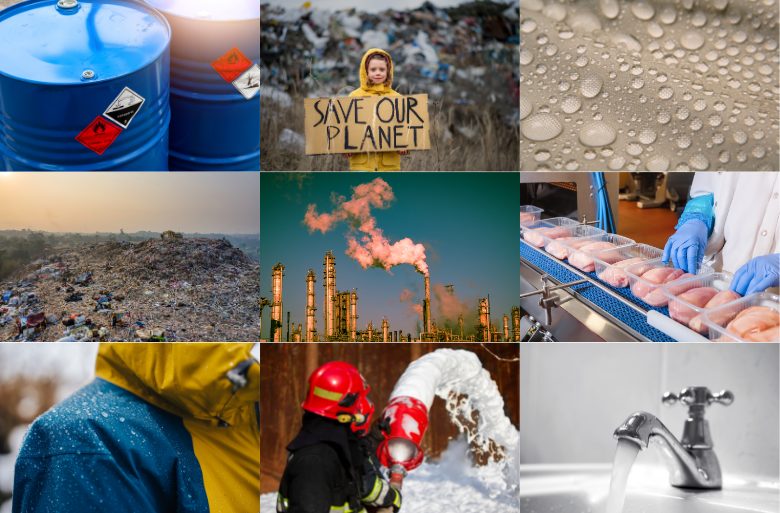Perfluoroalkyl substances (PFAS) have contaminated our environment and daily lives, posing a significant challenge to human health and environmental integrity. Understanding the sources of PFAS exposure is crucial in addressing this pervasive issue and mitigating its impact on public health. In this article, we delve into the various pathways through which PFAS enter our surroundings, shedding light on the complex web of contamination.
Consumer Products
PFAS are commonly found in a wide range of consumer products, including non-stick cookware, waterproof textiles, food packaging, and personal care products. These chemicals can leach out of products over time, leading to direct exposure to consumers through ingestion, inhalation, or dermal contact. While individual exposure from consumer products may be relatively low compared to other sources, cumulative exposure over time can still pose health risks.
Industrial Releases
Industrial facilities that manufacture or use PFAS-containing products are major contributors to environmental contamination. These chemicals can be released into the air, water, or soil during production processes, leading to widespread contamination of surrounding areas. Industries such as textiles, electronics, and chemical manufacturing are known to discharge PFAS into the environment, creating hotspots of contamination near manufacturing sites.
Firefighting Foams
PFAS-containing firefighting foams, known as aqueous film-forming foams (AFFF), have been widely used by military and civilian fire departments for decades due to their effectiveness in extinguishing flammable liquid fires. However, the use of AFFF has led to contamination of soil and groundwater at training facilities, airports, and firefighting sites, posing risks to both firefighters and nearby communities.
Landfills and Waste Sites
Improper disposal of products containing PFAS can result in leaching of these chemicals into the environment over time. Landfills and waste sites that accept industrial and consumer waste may become sources of PFAS contamination, as these chemicals can seep into the soil and groundwater, leading to long-term environmental degradation. Landfill leachate, the liquid that drains from landfills, can carry PFAS into nearby water bodies, further spreading contamination.
Industrial Waste Discharges
Industries that use PFAS in their manufacturing processes may discharge wastewater containing these chemicals into municipal sewage systems or directly into water bodies. Municipal wastewater treatment plants are not always equipped to remove PFAS effectively, leading to the release of contaminated effluent into rivers, lakes, and oceans. This can result in widespread contamination of aquatic ecosystems and drinking water supplies downstream.
Atmospheric Deposition
PFAS can travel long distances through the atmosphere and deposit onto land and water surfaces far from their original sources. Atmospheric deposition is particularly concerning in remote or pristine environments, where PFAS contamination may be unexpected but still prevalent. Once deposited, PFAS can accumulate in soil and water, posing risks to wildlife and ecosystems.
Food and Drinking Water
Contamination of food and drinking water sources is a significant pathway for human exposure to PFAS. These chemicals can enter the food chain through contaminated soil and water, leading to bioaccumulation in animals and seafood. Consumption of contaminated food and water is a common route of exposure for humans, with certain populations, such as subsistence fishermen and indigenous communities, facing elevated risks due to their reliance on locally sourced food and water.
PFAS contamination is a multifaceted issue with diverse sources and pathways of exposure. Addressing this challenge requires comprehensive strategies that target the root causes of contamination, including tighter regulations on industrial releases, improved waste management practices, and safer alternatives to PFAS-containing products. By understanding the sources of PFAS exposure and taking proactive measures to reduce contamination, we can safeguard human health and protect the environment for future generations.




